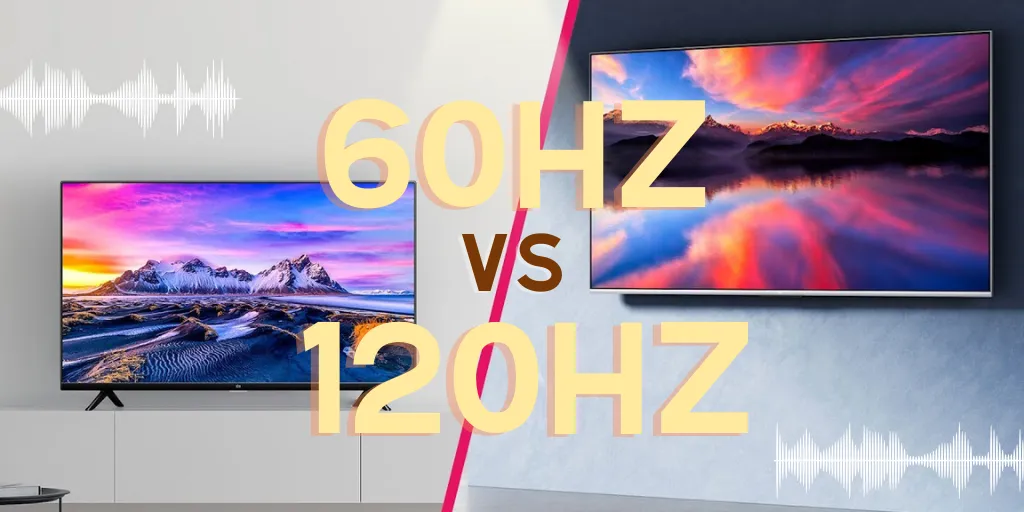
Do you love to have a big-screen TV? Read this article on 60Hz Vs 120Hz For TVs – Is It Worth The Upgrade? All your doubts will be cleared. Also, you will be able to understand the difference between 60Hz and 120Hz.
Many people are confused by the difference between 60hz and 120hz. It’s easy to understand – 60hz means 60 times per second. That means your TV is displaying a picture 60 times every second. 120hz means 120 times per second. This means your TV is displaying a picture 120 times every second.
The smoother the screen will look to the human eye, the higher the number. A 120Hz display, which updates itself 120 times per second, will therefore appear noticeably smoother and more natural than a typical 60Hz panel, which refreshes itself just 60 times each second.
Contents
Refresh Rate
Which is the good refresh rate “60Hz Vs 120Hz For TVs“? Refresh rates are the frequency at which your TV or monitor displays images on the screen or the number of times per second the screen refreshes itself. They are measured in hertz (Hz). This is the rate at which the screen changes from displaying a picture, to displaying the next picture.
It affects how sharp the picture appears, and how clear and vibrant it is. The higher the refresh rate, the smoother your experience will be. But the more power it uses, the hotter the TV gets.
What Is Its Significance?
We all know that the standard refresh rate for TVs is 60Hz. But a lot of people are switching to 120Hz because it gives them a smoother picture.
When you look at a 60Hz TV, every single frame is being refreshed 60 times per second. So when the picture moves, it moves 60 times faster than your eyes can follow. This means you see a jerky or “jumpy” motion where the picture seems to stop and start again with each movement.
On the other hand, when you look at a 120Hz TV, each frame is refreshed 120 times per second. This means your eyes can follow the movement of the picture smoothly, without having to wait for the next refreshment. Which gives you a much smoother experience and makes everything on the screen appear much more realistic.
The choice is up to you. But if you have the option, we highly recommend getting a 120Hz set. It will make your viewing experience much more pleasurable.
What Happens When You Get A Higher Refresh Rate?
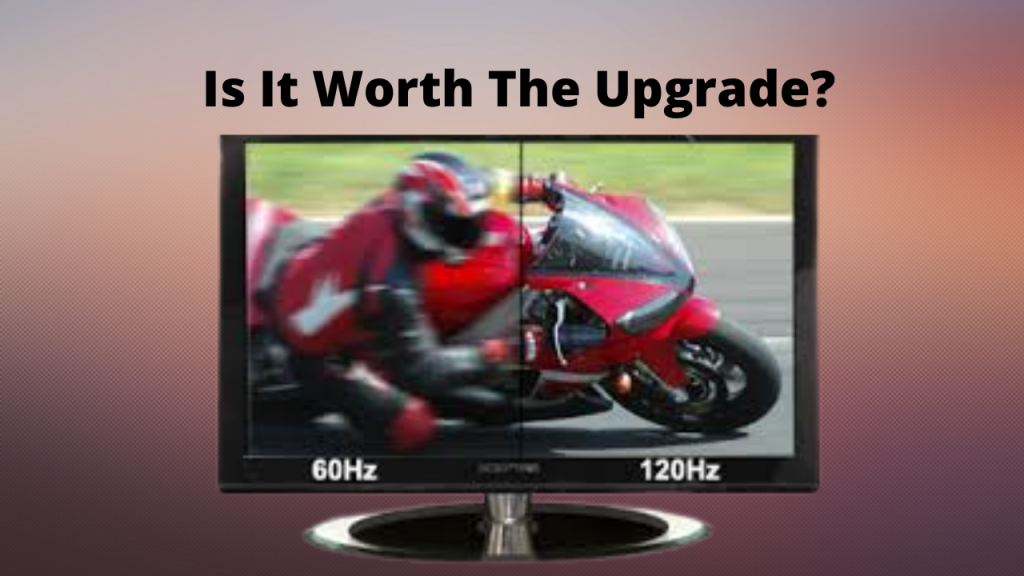
A higher refresh rate means that the screen will display more changes in a second. For example, a 60Hz monitor has a refresh rate of 60 times per second. Anything higher than 60Hz is considered a “super-high” refresh rate.
A higher refresh rate means that your monitor can display more frames per second, which gives you a smoother and clearer picture.
It’s a great thing to have if you’re playing games, watching movies, or viewing photos on your monitor. However, this doesn’t mean that you can increase the refresh rate indefinitely.
This is because monitors have a limited ability to display information, and when they exceed their ability, they may start to display a distorted image. Hence, it’s best to stick with the standard refresh rate of 60Hz.
60Hz vs 120Hz For TVS
60Hz vs 120Hz is a very debatable issue in today’s world. Some people say that they prefer the 60Hz version because of its flicker-free picture quality, while others prefer the 120Hz version because of its wider viewing angle.
However, if you’re planning to use your TV for gaming or watching movies, then you should go for the 120Hz version. It gives you a more immersive experience.
60Hz Refresh Rate
First, what is 60Hz? It is the standard refresh rate of a CRT (cathode ray tube) TV. Back in the day, when TVs first came out, they only had three refresh rates – 30Hz, 50Hz, and 60Hz. Later, 72Hz and 75Hz were added as well.
Benefits of 60Hz
Low power consumption: A 60Hz TV uses less energy than a 120Hz TV. Hence, you will save on electricity costs. It also lasts longer, so you won’t need to change it for a long time.
Less flicker effect: When you watch movies or play games, you don’t want to see flickering effects. Hence, the 60Hz refresh rate is the best option.
120Hz Refresh Rate
A 120Hz refresh rate is the rate at which the display refreshes images on the screen. In comparison to 60Hz, it results in a smoother image and fewer flicker effects. However, it also uses more power, so you should only use this refresh rate when you’re watching movies or playing games.
60Hz vs 120Hz For TVs – Which One To Choose?
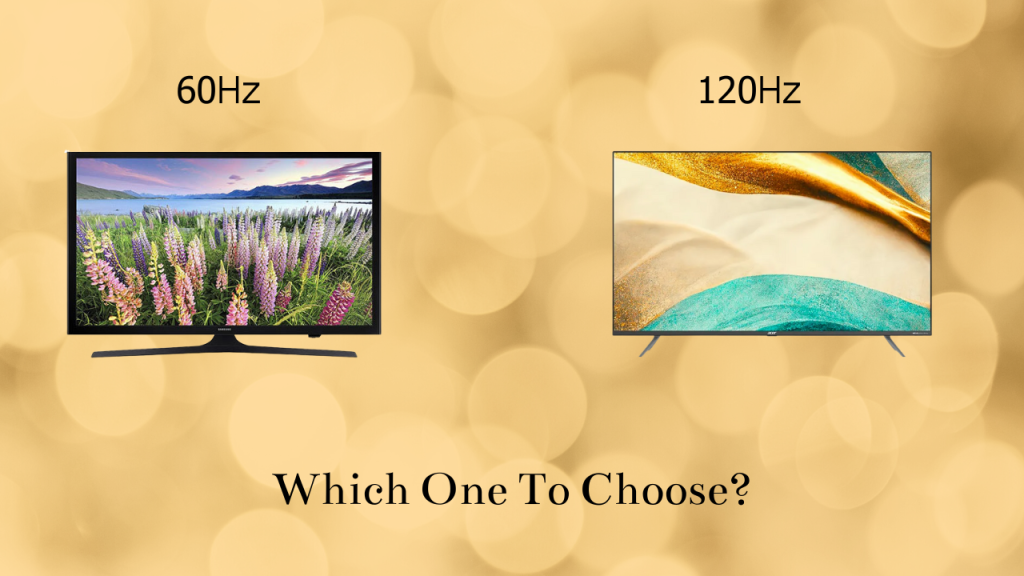
A 60Hz TV requires less energy than a 120Hz TV to operate, but it doesn’t provide better picture quality. Most people don’t notice any difference in picture quality between the two sets.
Hence, a 120Hz TV is not worth the upgrade. However, if you’re watching movies or playing games, then a 60Hz TV might not be the best option.
You are reading “60Hz Vs 120Hz For TVs – Is It Worth The Upgrade In 2023?”
Hence, if you are a true “TV addict”, then you should consider an upgrade to 120Hz. But otherwise, you don’t need it and should stick to 60Hz. The flicker effect is another reason why most people prefer the 120Hz version.
The flicker effect is caused by the rapid movement of the electrons inside the CRT. This rapid movement causes the picture to flicker.
Accordingly, if you’re planning to buy a new TV, then you should go for the 60Hz version. Is 120Hz Better? There are many benefits of using the 120Hz version of the TV. It provides a wider viewing angle, which is useful if you’re watching a movie in a large room.
You can also use it with 3D TVs because it has a better response time. It also has better color reproduction than the 60Hz version. Hence, if you’re looking to buy a new TV, then you should go for the 120Hz version.
Is It Worth Getting A TV With a 120 Hz Refresh Rate?
That all depends on your personal preferences. Most people find a refresh rate of 60 Hz pleasurable and comfortable to watch. However, some people feel that a higher refresh rate makes watching TV or videos more exciting and enjoyable. Hence, if you’re one of those people, then you should get a 120 Hz TV.
The main benefit of this feature is that it helps reduce screen tearing and motion blur, which makes watching movies on a TV with this refresh rate much smoother. But you should know that most TVs sold in stores have a refresh rate of 60 Hz, so you might as well go for it if you want the higher refresh rate.
60Hz Vs 120Hz For TVs – Is It Worth The Upgrade In 2023? Hence, unless you are an avid TV viewer who watches a lot of sports or action movies, then you might want to consider skipping this feature altogether.
120Hz For Gamers
If you’re a gamer, then you know how important a good refresh rate is. It’s the number of times per second your screen refreshes. Higher refresh rates give you a sharper and more detailed image on the screen, and it makes the gameplay smoother.
Gamers will love 120Hz because it allows them to play games with a higher frame rate without any blur. It also reduces motion sickness and improves eye fatigue. In short, this will make your gaming experience better and more enjoyable.
It is very useful for reducing motion blur and improving the overall gaming experience.
Most PC monitors have a 60Hz refresh rate. This means that your monitor updates its image 60 times per second. Most console video games have a 60Hz refresh rate too. However, some newer games can run at a higher refresh rate (like 120Hz).
This allows the gamer to get a much smoother gaming experience by eliminating the “screen tearing” effect caused by the refresh rate of the monitor. So if you’re playing a new game and find that the 120Hz refresh rate is giving you a more realistic gaming experience, then you can adjust your monitor to 120Hz.
If you want to know more about the 60Hz Vs 120Hz For TVs, check out this video below:
Are Super-Fast Refresh Rates Worth It?
A super-fast refresh rate has a higher refresh rate than the normal refresh rate.
For example, if your monitor has a refresh rate of 60 Hz then it means that your monitor refreshes the screen 60 times in one second. If your monitor has a refresh rate of 100 Hz then it means that your monitor refreshes the screen 100 times in one second.
So, a higher refresh rate will give you a more clear picture. However, it will also reduce the battery life of your monitor. Using a super-fast refresh rate monitor will generate more heat than a normal monitor.
This may not be a problem if you are using an office desk, but if you are using a laptop or a computer that is placed on your lap then this extra heat may become a problem.
So, is it worth using a super-fast refresh rate monitor? Well, this depends on your work habits. If you are someone who has a very high work capacity and you can use a super-fast refresh rate monitor without any problem then using one will give you more work done.
However, if you are someone who has a lower work capacity and you find it difficult to use a super-fast refresh rate monitor then it will be better for you to stick to a normal 60 Hz monitor. It all comes down to personal choice.
So, what I suggest is that you try both and then decide based on your own choice.
Some Related Terms:
The Motion Interpolation Feature
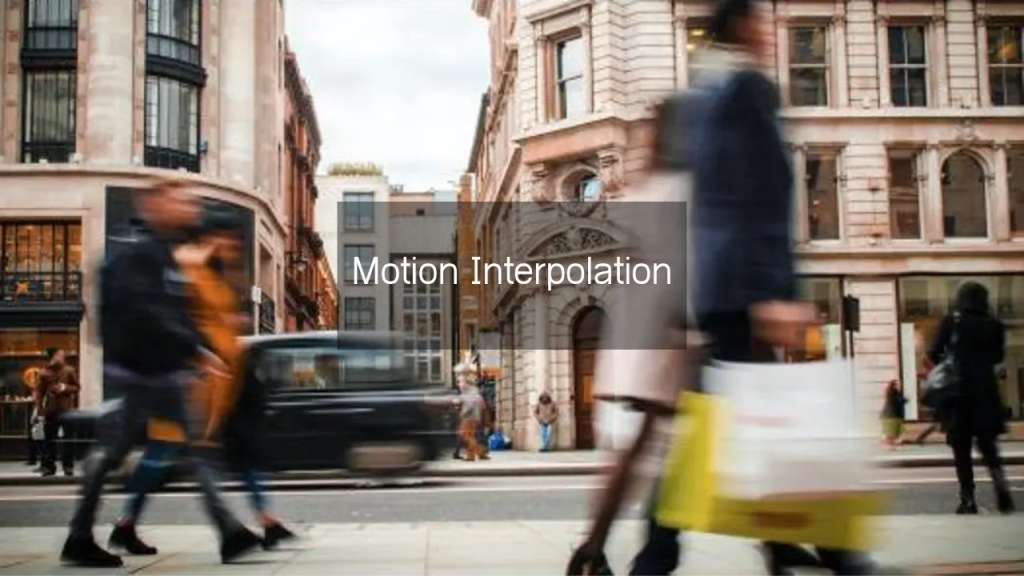
Motion interpolation is a feature of some display monitors that allows them to display a more detailed image when a moving object is detected. It works by interpolating the frames of an image to make it look smoother and more natural.
Some LCD monitors can also display a “motion smoothing” setting in the display settings to achieve the same effect. This feature is not available on all monitors, and the quality of the result depends on how well the interpolation is done.
Flicker Frequency

Flicker Frequency is the frequency at which the screen flickers. Flicker frequency in monitor displays is measured in hertz (Hz), which is the number of times per second (1/second) a display screen changes from white to black, or vice versa.
The human eye can detect anything from as low as 15 Hz (in low-end digital watches) up to over 150 Hz (in high-end computer monitors). CD and plasma display screens have a flicker frequency of about 50-60 Hz. CRT and old-fashioned cathode ray tube (CRT) monitors had a flicker frequency of approximately 75 Hz.
Even older models of CRT and newer LCD and plasma displays have a flicker frequency of only 40-50 Hz. This makes all computer monitors (even the most expensive ones) flicker at a rate of 100 times lower than what your eyes are used to, which is very good for your eyes.
Black Frame Insertion
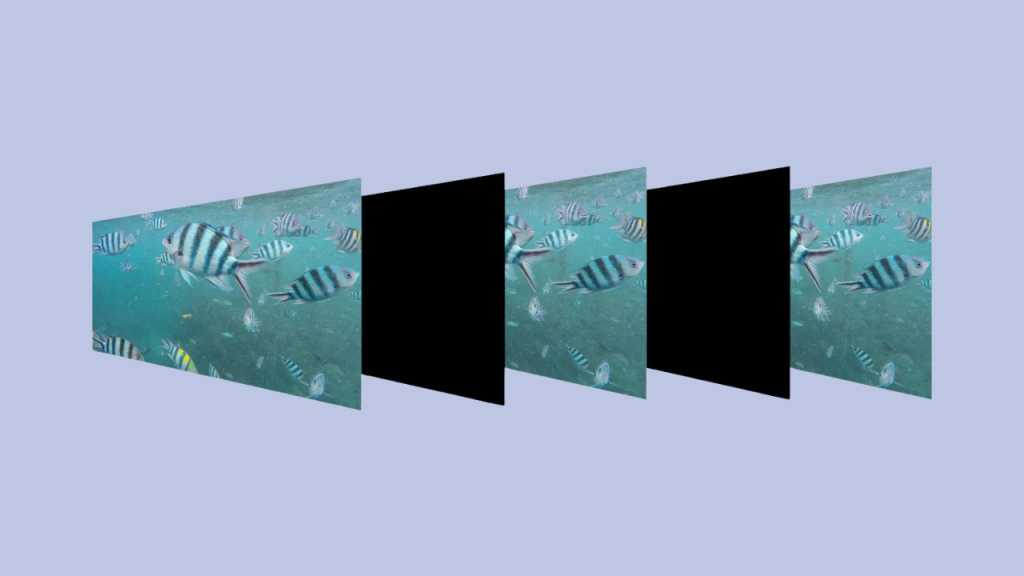
Black Frame Insertion can be used to make a picture clearer. Many people don’t realize that the black frames are there. Most of the time, the frames are too short to be seen.
If you look closely, you will see that there are two black frames. The first frame is the black frame that is visible. The second frame is the black frame that is hidden.
It allows you to watch TV without the annoying flickering that you see on older TVs. If you want to use this feature, you will need to make sure that you are using a TV that has this feature.
Conclusion
TVs have come a long way since the days of black and white, with huge strides in technology happening every year. While there are many types of televisions on the market today, the two main competing standards for modern TV displays include 60Hz and 120Hz refresh rates.
60Hz Vs 120Hz For TVs – Is It Worth The Upgrade In 2023? In this blog post, we’ve covered some key points to consider when buying a new television set including screen size, resolution type, device connectivity options, viewing angle versatility, and more.
We hope you’ve enjoyed this discussion on “60Hz Vs 120Hz For TVs – Is It Worth The Upgrade?”. Thanks for reading! and Do check out other articles on our website.
Read More:
6 BEST MONITOR FOR FPS GAMING IN 2023 – EXPERT GUIDE
7 BEST MONITOR FOR SOFTWARE DEVELOPMENT IN 2023 – REVIEWED AND RATED
7 BEST 4K MONITOR FOR CODING | REVIEWS & GUIDE | 2023
- What Monitor Size Is Right for You — 24″, 27″, or 32″? - October 8, 2025
- How to Set Up a Dual Monitor System for Work or Gaming - October 8, 2025
- 10 Common Monitor Mistakes People Make While Buying Online - October 8, 2025
- bet365: the ultimate casino destination for indian players
- win big and have fun with bet365: india\'s best casino site
- bet365: the only casino site you need for indian gaming fun
- join the fun at bet365: india\'s most popular casino site
- discover the best casino site in india: bet365
- play the best casino games and claim huge bonuses at bet365
- get ready to win big at bet365: india\'s premier casino site
- bet365: the online casino site that offers the best rewards
- why bet365 is the best casino site for indian players who love to win
- looking for the best casino site in india? look no further than bet365
- bet365: the casino site that offers the best gaming variety for indian players
- experience the thrill of casino gaming with bet365
- get your casino gaming fix at bet365, india\'s leading site
- join the fun and win big with bet365: india\'s top casino site
- discover the best casino site in india for big jackpots: bet365
- bet365: the casino site that offers the best experience for indian players
- play your favorite casino games at bet365, india\'s most trusted site
- why bet365 is the only casino site you need for indian gaming fun
- bet365: the premier casino site for indian players who love to win
- get in on the action at bet365, india\'s best online casino